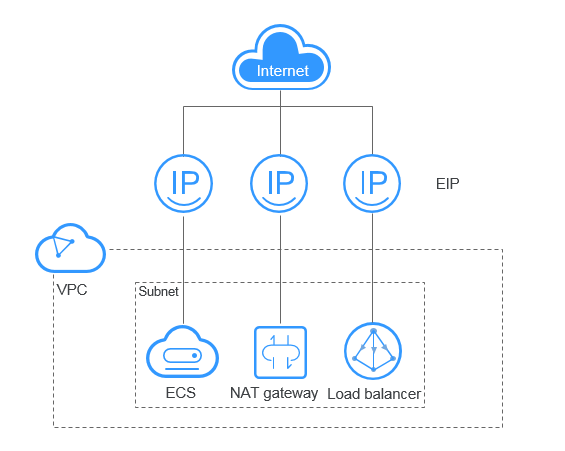Functions
EIP provides various functions for you to flexibly configure services and build diversified networks.
This section describes main functions of EIP. You can check if a certain function is available in a region on the management console.
EIP
The EIP service enables your cloud resources to communicate with the Internet using static public IP addresses and scalable bandwidths.
You can assign EIPs, bind them to or unbind them from cloud resources, release EIPs, modify EIP bandwidth, and upgrade static BGP EIPs to dynamic BGP EIPs.

For details, see Assigning an EIP.
IPv6 EIP
Both IPv4 and IPv6 EIPs are available. You can assign an IPv6 EIP or map an existing IPv4 EIP to an IPv6 EIP.
After the IPv6 EIP function is enabled, you will obtain both an IPv4 EIP and its corresponding IPv6 EIP. External IPv6 addresses can access cloud resources through this IPv6 EIP.
For details, see IPv6 EIP Overview.
Shared Bandwidth
A shared bandwidth allows multiple EIPs to share the same bandwidth. The EIPs of all ECSs, BMSs, and load balancers can share the same bandwidth if they are in the same region.
You can assign, modify, delete a shared bandwidth, add EIPs to a shared bandwidth, and remove EIPs from a shared bandwidth.
For details, see Shared Bandwidth Overview.
Feedback
Was this page helpful?
Provide feedbackThank you very much for your feedback. We will continue working to improve the documentation.






